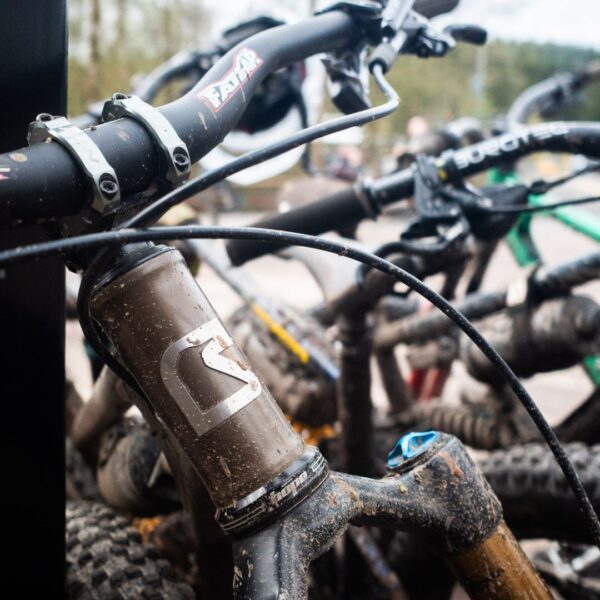
Popular bike marketing suggests increased bike stiffness is a positive thing.
I believe this has historically come from the road bike world where stiffness is believed to be important for pedalling performance.
Firstly, this isn’t true, a bike only needs to be stiff enough that you can generate full leg power, any stiffer doesn’t increase pedalling performance.
Secondly, pedalling just isn’t as important for gravity fuelled mountain biking, and let’s be honest, that’s where the fun is and where we want our bikes to perform the best. Sure, you want your enduro bike to pedal well but it doesn’t need to win the Tour de France. Stiffness is less important than, say, on a road bike.

Lateral Flex and Your Mountain Bike Frame
Then we get the argument that you need a stiff bike for the suspension to work correctly. Why let any movement happen in the frame rather than in the suspension? I totally agree with this argument, but it’s overly simplistic and needs some expansion.
When the bike is vertical and the bumps are acting in this direction, yes it makes sense that our very expensive suspension unit should be allowed to work as well as possible. But in reality, all frames, even skinny tubed steel ones, are massively stiff in the vertical direction. The overall depth of the frame, the distance between the tubes, dominates the stiffness equations. They are plenty stiff enough!
But what happens, when you lean the bike over in a corner or an off-camber section? In this case, the bike is no longer vertical to the ground and any bump forces will act to bend the frame sideways, let’s call this lateral flex.
At 45° lean, only half the bump forces act in the plane of the suspension, the other half acting to bend the frame sideways. If your frame is massively stiff in the direction then it will not be able to conform to the forces from the ground and you will be losing grip.
A laterally compliant frame will be able to soak up these bumps giving grip and control. In an ideal world, we would design suspension to work in this direction, but until then, steel offers a great opportunity to add this compliance in.

And Why Steel?
So why is steel better suited to a laterally compliant frame?
Firstly, let’s get it clear, steel is stiffer and stronger than both than both carbon and aluminium for a given amount of material, but it is denser.
The less-dense and weaker materials lend themselves to large-diameter tubes with thicker walls for impact resistance. To keep steel wall thicknesses acceptable for impact resistance, the diameter needs to be much less.
The small diameter steel tubes are plenty strong enough, but tube bending and torsional stiffness is a function of tube diameter cubed. So, these smaller tubes are more flexible. So naturally carbon and aluminium lend themselves to large diameter stiff structures, steel to smaller compliant ones.
Ex-aerospace engineer Joe Mcewan is the founder and chief engineer of Starling Cycles. Passionate, outspoken and fond of a cuppa and a debate, Joe loves to challenge the established thinking of the industry.